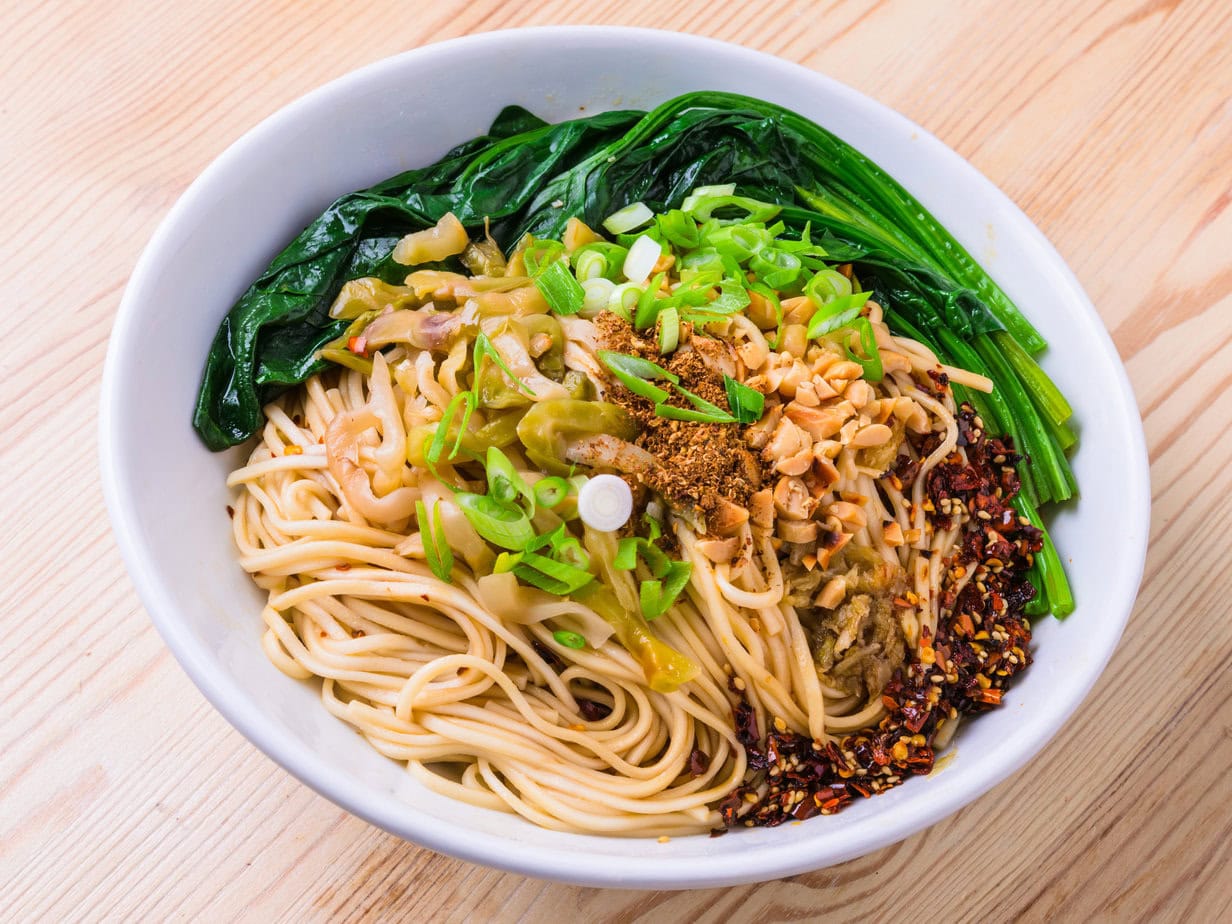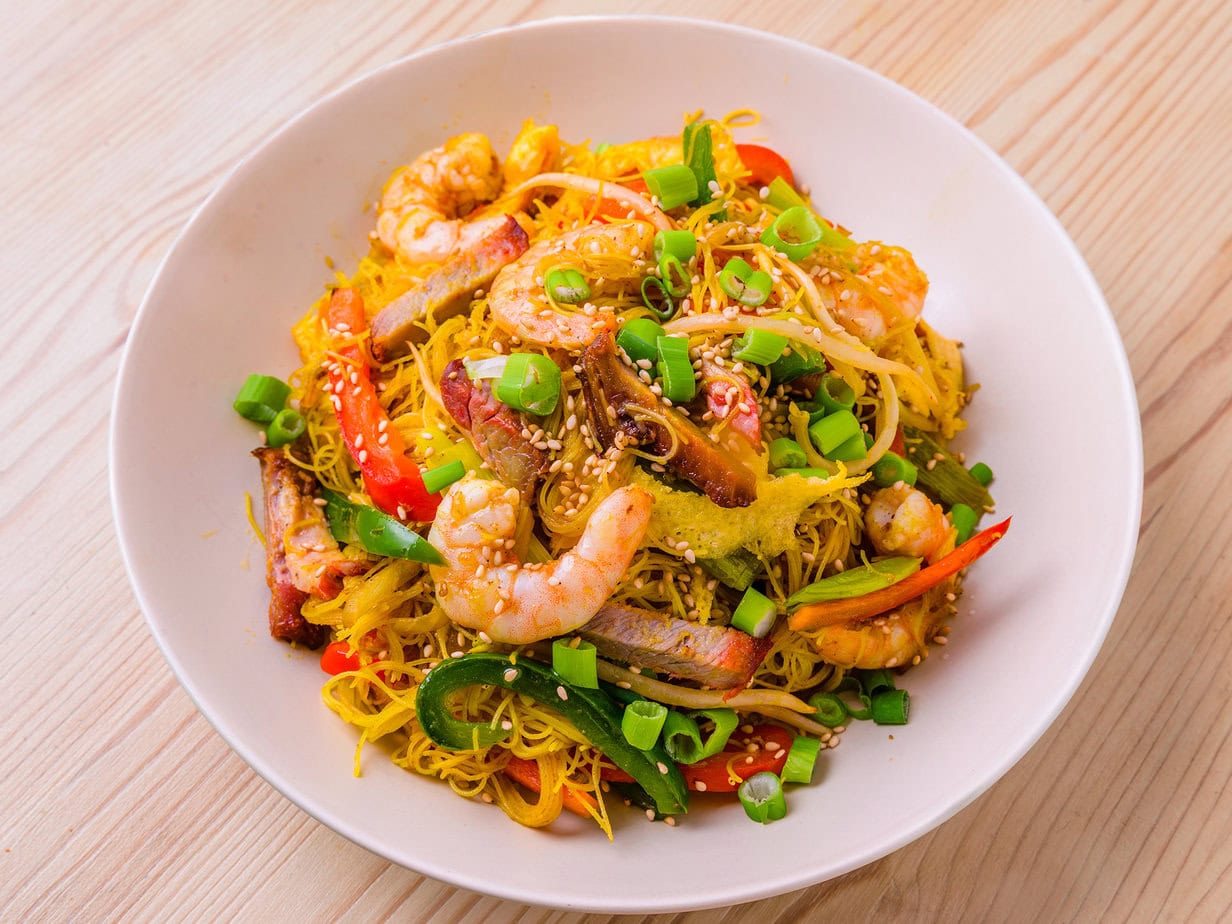There is no absolute consensus on the exact number of major Chinese cuisines. Some count three, others four, five, seven, or even eight. But even eight cannot encompass all the culinary diversity of this country: China has more than thirty provinces, each with its own specialties and preparation methods, not to mention local cuisines within cities or those of ethnic minorities. According to some studies, there are at least 400 regional culinary styles in China.
Imagine a territory as vast as Europe, with varied landscapes and populations with distinct lifestyles, which naturally influence the production and selection of ingredients. This geographic diversity is indeed reflected on the plate:
- China is home to more than 56 recognized ethnic groups, each with its own customs and specialties.
- From the mountainous regions of Tibet to the tropical forest of Yunnan, through the northern plains, the steppes of Inner Mongolia, or the southeastern coasts, the range of local products varies greatly (cereals, seafood, freshwater fish, spices, herbs, etc.).
One can therefore understand the difficulty of setting a definitive number for these “major cuisines”, as local influences are so abundant and sometimes vary from one village to another. In his work Food in Chinese Culture, historian Kwang-chih Chang emphasizes that each region has developed its own culinary identity, closely correlated with its environment and history.
My Latest Chinese Recipes
A Culinary Diversity Linked to Geography
- In the North, in the colder provinces, wheat and cereals are omnipresent, while pork, lamb, and freshwater fish are abundant.
- In the South, rice becomes the basis of many dishes, accompanied by vegetables such as bean sprouts, water chestnuts, or wild mushrooms.
- On the coasts, all kinds of seaweed and seafood are found – from sea snails to sea cucumbers, jellyfish, and abalone.
- Inland, chicken and pork dominate, with sometimes rabbit or lamb depending on the region.
The Connection with Traditional Chinese Medicine
To delve deeper into Chinese regional cuisine, one must first understand the principles of Traditional Chinese Medicine (TCM), which is based on climate and the concept of balance. Often, the foods recommended by TCM grow or are found precisely in the region concerned.
- In Sichuan, with its hot and humid climate, TCM considers that the body can suffer from “‘excessive humidity’. Spicy dishes, reputed to be ‘warming’, are then recommended to restore” balance, hence the reputation of the very spicy dishes from this province.
- In the North, with a drier climate, TCM favors whole grains (wheat, millet, beans) as well as watery vegetables (cucumbers, lettuce, radishes, zucchini) to compensate for the lack of moisture.
Three Major Zones: North, South, and West
The first way to segment Chinese gastronomy is to distinguish three major areas:
- The North (Dongbei provinces: Heilongjiang, Jilin, Liaoning, but also Beijing, Hebei, Shanxi, Shaanxi, Inner Mongolia, Ningxia, and Gansu). The dishes here are rich in wheat, hearty in nature, and still quite unknown outside of China.
- The South (Guangxi, Guangdong, Fujian, Hubei, Henan), characterized by lighter flavors, with a marked use of rice (and rice noodles), broths, and steamed preparations.
- The West (Sichuan, Chongqing, Hunan, Yunnan), famous for its chilies, mouth-numbing pepper, and fiery chili oils.
The 8 Major Chinese Cuisines
During the Qing dynasty, four major culinary schools were distinguished, corresponding to the cardinal points:
- The North (Lu Cai, 鲁菜)
- The East (Huaiyang Cai, 淮扬菜)
- The South (Yue Cai, 粤菜)
- The West (Chuan Cai, 川菜)
In the 1980s, the government officialized an expanded list to make eight major cuisines, a classification that remains the most used to describe the Chinese gastronomic scene today.
The Characteristics of the 8 Great Chinese Cuisines
- Shandong Cuisine: Fresh and salty with many seafood dishes.
- Sichuan and Hunan Cuisines: Very, very spicy and flavorful cuisine.
- Guangdong (Cantonese), Zhejiang, Jiangsu Cuisines: Excellent seafood, generally with sweet and light flavors.
- Anhui and Fujian Cuisines: Inclusion of wild foods from their mountains.
1. Guangdong/Cantonese Cuisine
- Sweeter, favoring braising and stews, with various very sweet sauces
Cantonese cuisine is the most popular style internationally. The Guangdong province and Hong Kong are renowned for their refined seafood dishes and rice dishes, such as Cantonese fried rice or steamed Chinese sausage rice and even the famous zongzi enjoyed during the Dragon Boat Festival. We must not forget the famous congee or beef chow fun.
The Guangdong province is considered one of the greatest culinary paradises in China, with gastronomic hotspots such as Guangzhou and Chaozhou, famous for its Chaoshan cuisine. The variety of foods consumed there is immense, but the dishes generally do not have very strong flavors: the seasoning remains light, sometimes slightly sweet, and chili is almost absent.
Moreover, this is where the famous Chinese sausages come from
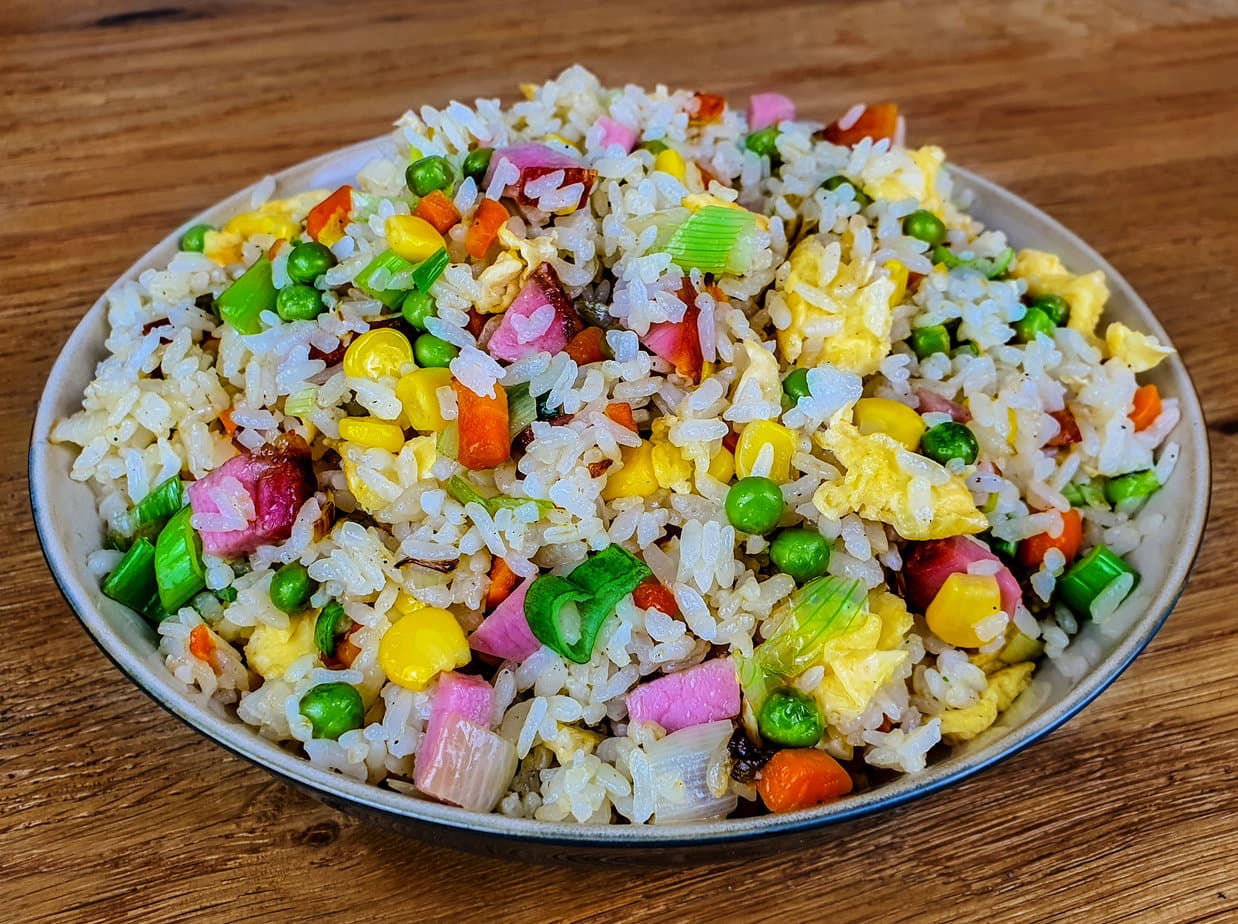
Chefs focus more on the freshness of ingredients, particularly fish and seafood, which they prefer to steam or poach, often in delicate broths. This subtle approach to cooking is no less delicious and, as proof, a large number of dim sum we know today come directly from this region.
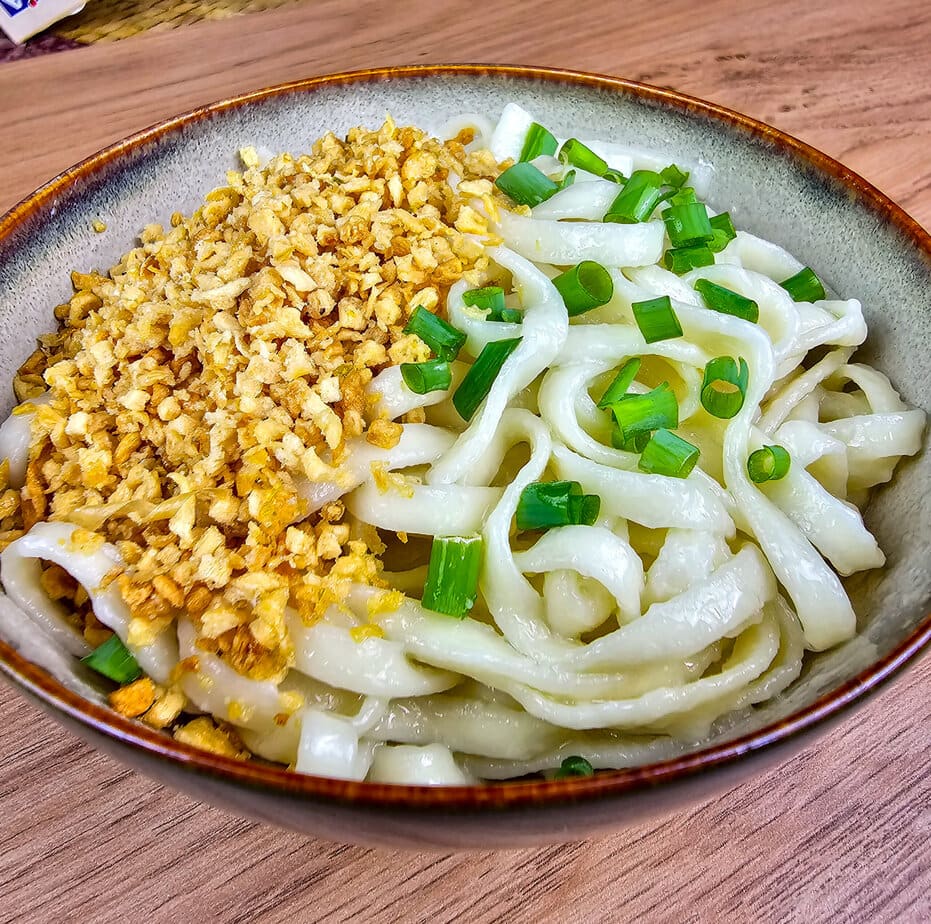
Do you know Chinese barbecued pork? Also called Char Siu? Well, it comes from there! As does boo zai fan, also called claypot rice
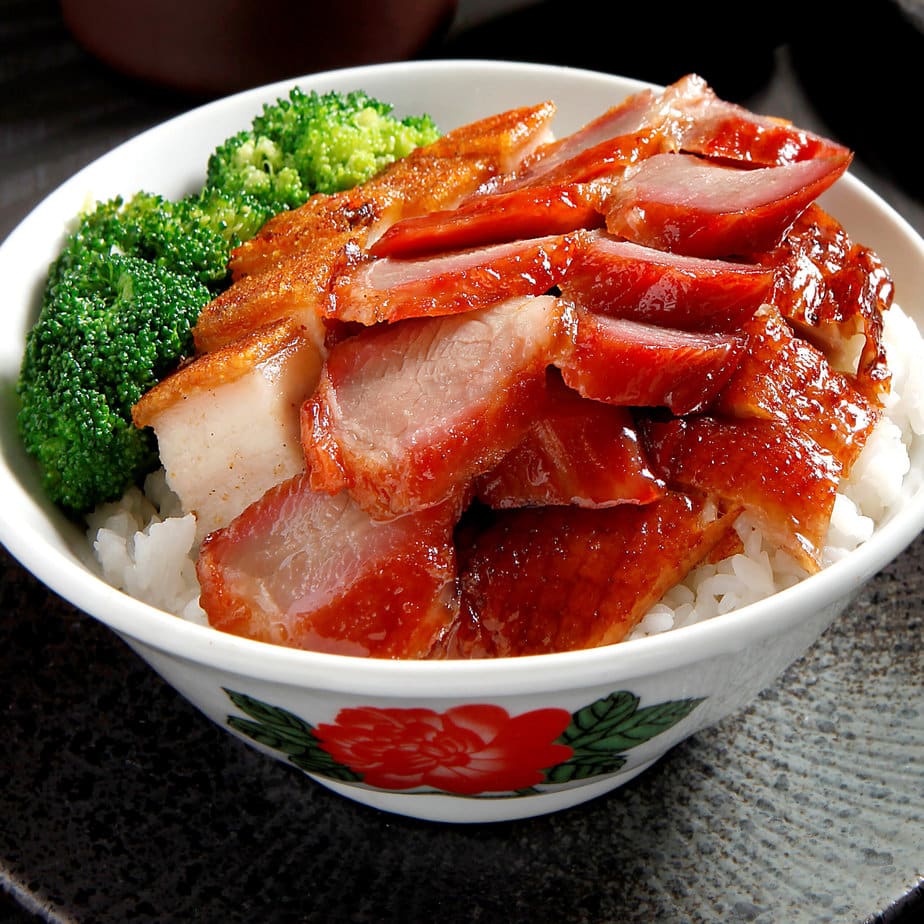
There are also many salads. Here’s a recipe for Chinese dressing like in restaurants and even berries like the famous goji berries
Cantonese dim sum are very popular, with a great classic being, of course, chicken feet
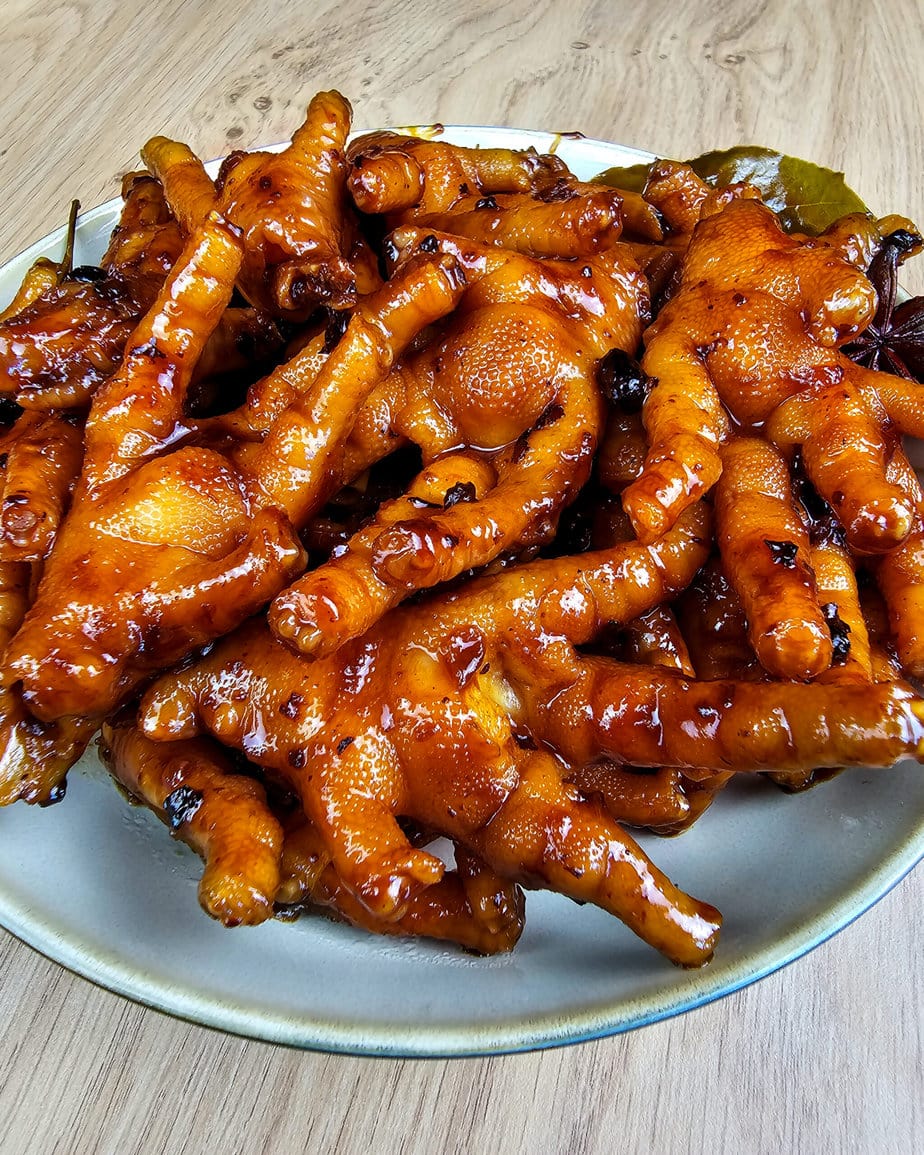
2. Sichuan Cuisine
- Spicy and powerful, often even numbing when using
authentic
quantities of spices, it uses a lot of chili, garlic, ginger, and peanuts
The Sichuan province has produced the most popular cuisine style in China. Their dishes are known for their spicy and hot taste and the ultra-special flavor of Sichuan pepper, rare in other regional cuisines.
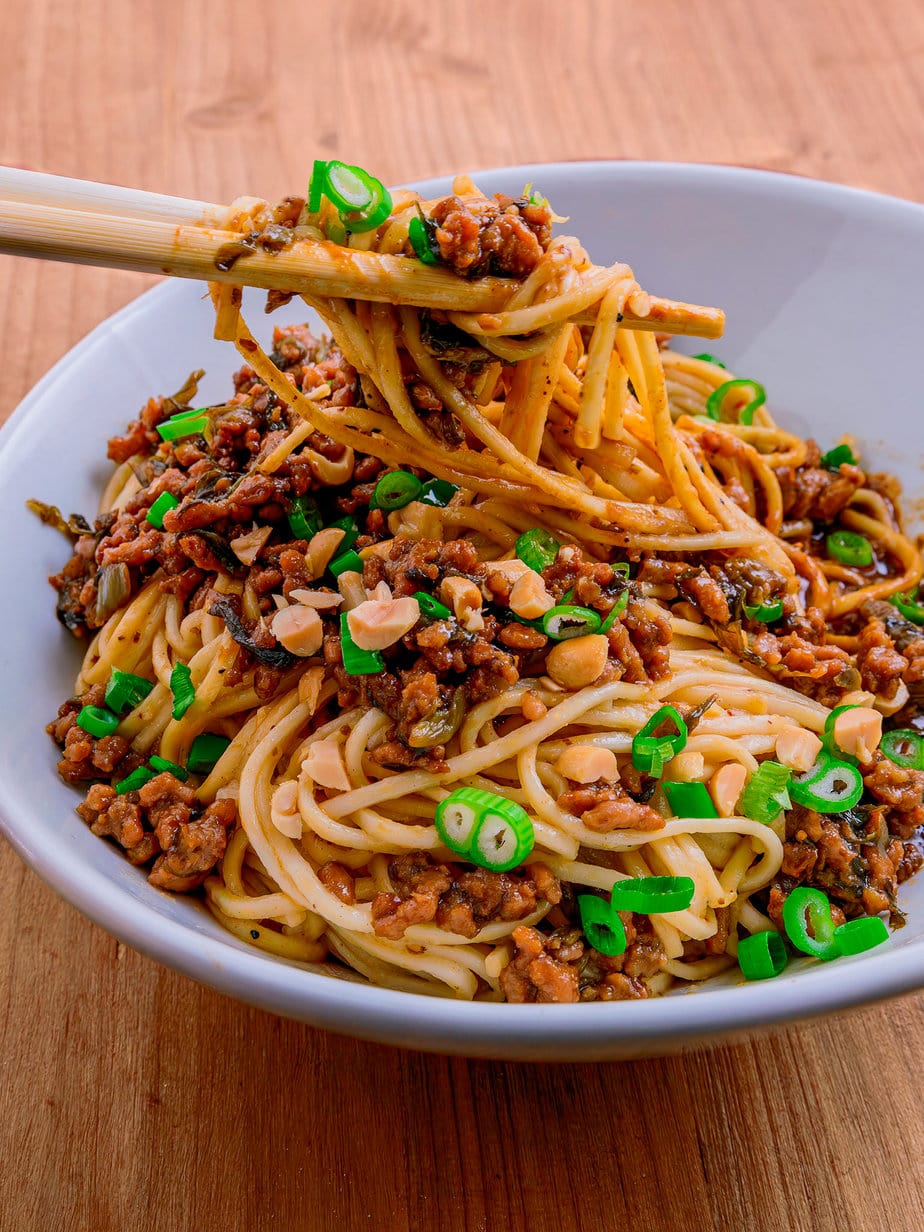
Long mistakenly considered as only “explosive”, Sichuan gastronomy is actually based on a clever balance of flavors. We can notably distinguish ma (slightly numbing sensation due to Sichuan pepper), la (controlled spiciness), tian (sweetness) and suan (acidity). In its capital, Chengdu, we find a relaxed lifestyle, which however admits no compromise when it comes to cuisine.
To appreciate these nuances, one can first taste Sichuan beef, an emblematic dish combining complex spices and flavors. To enhance your recipes, try an Asian chili oil inspired by local traditions or opt for an even more authentic version with Sichuan chili oil. Another must-try is shui zhu beef, which offers a glimpse into the major role of flavored broths in Sichuan cuisine.
Pasta lovers won’t be able to resist the wide and generous biang biang noodles, nor the spicy wontons (Suanla Chaoshou), wrapped in a subtle blend of chili and acidity. The salt and pepper shrimp perfectly illustrate the local expertise, which magnifies the freshness of ingredients. Finally, the okra salad reminds us that Sichuan gastronomy is not limited to spicy dishes: it can also seduce with its lightness and diversity.
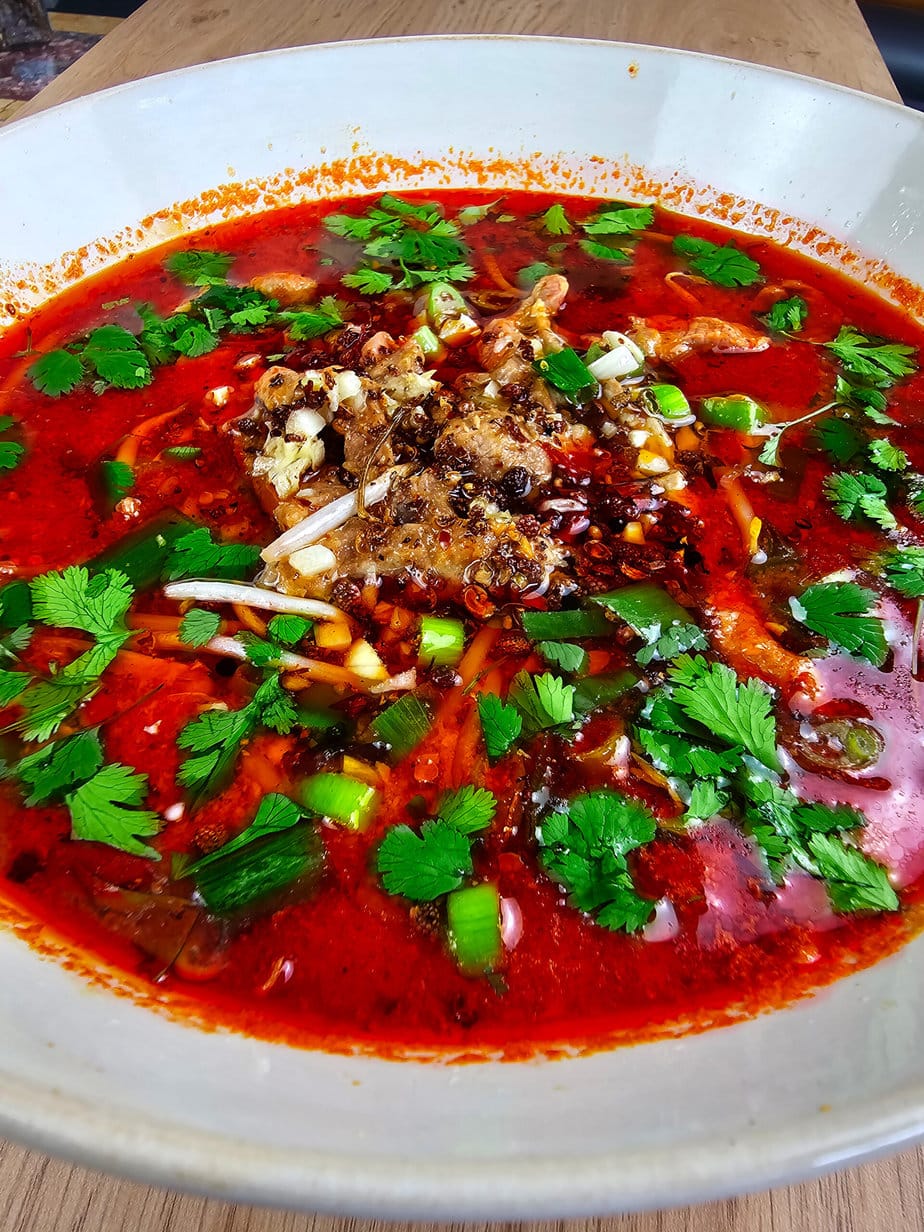
We also find the famous kung pao chicken, Sichuan-style chicken, or even Sichuan noodles with MSG, and of course Mapo Tofu. An unexpected dish is the Peking soup which indeed comes from this region
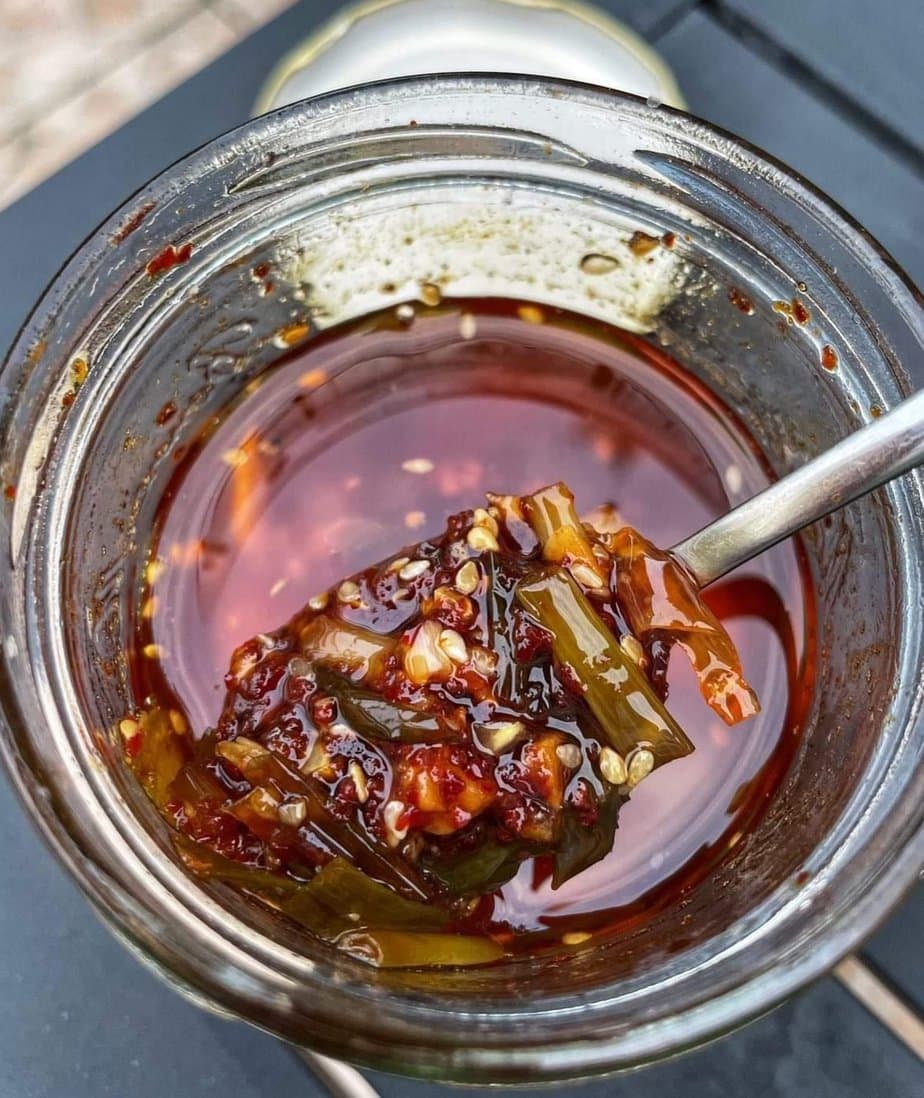
3. Jiangsu Cuisine
- Fresh, moderately salty and sweet, precise cooking techniques, favoring seafood, soups, and artistic and colorful presentation
The province of Jiangsu, which includes China’s largest city, Shanghai, is renowned for its extremely refined gourmet cuisine, often served at government banquets. Here, you can discover emblematic specialties such as the famous Xiao Long Bao soup dumplings or stir-fried shrimp noodles.
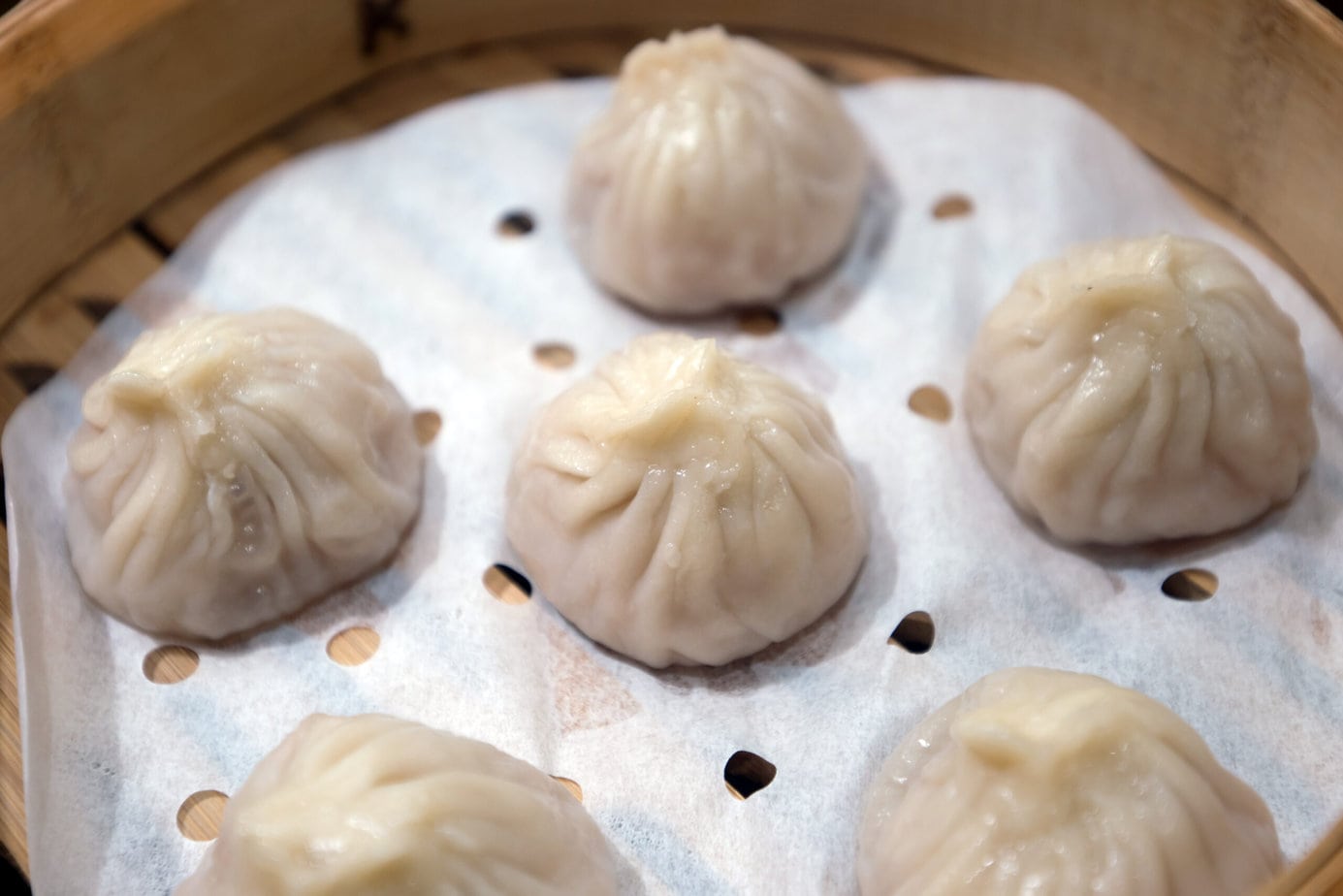
The chefs of this region use exquisite cooking techniques to create dishes rich in flavors and with great visual elegance, while emphasizing meals that promote health. Their version of red pork is simply exquisite (also try the Canadian version, Chinese spare ribs), and you can also enjoy the superb honey beef decorated with chive flowers.
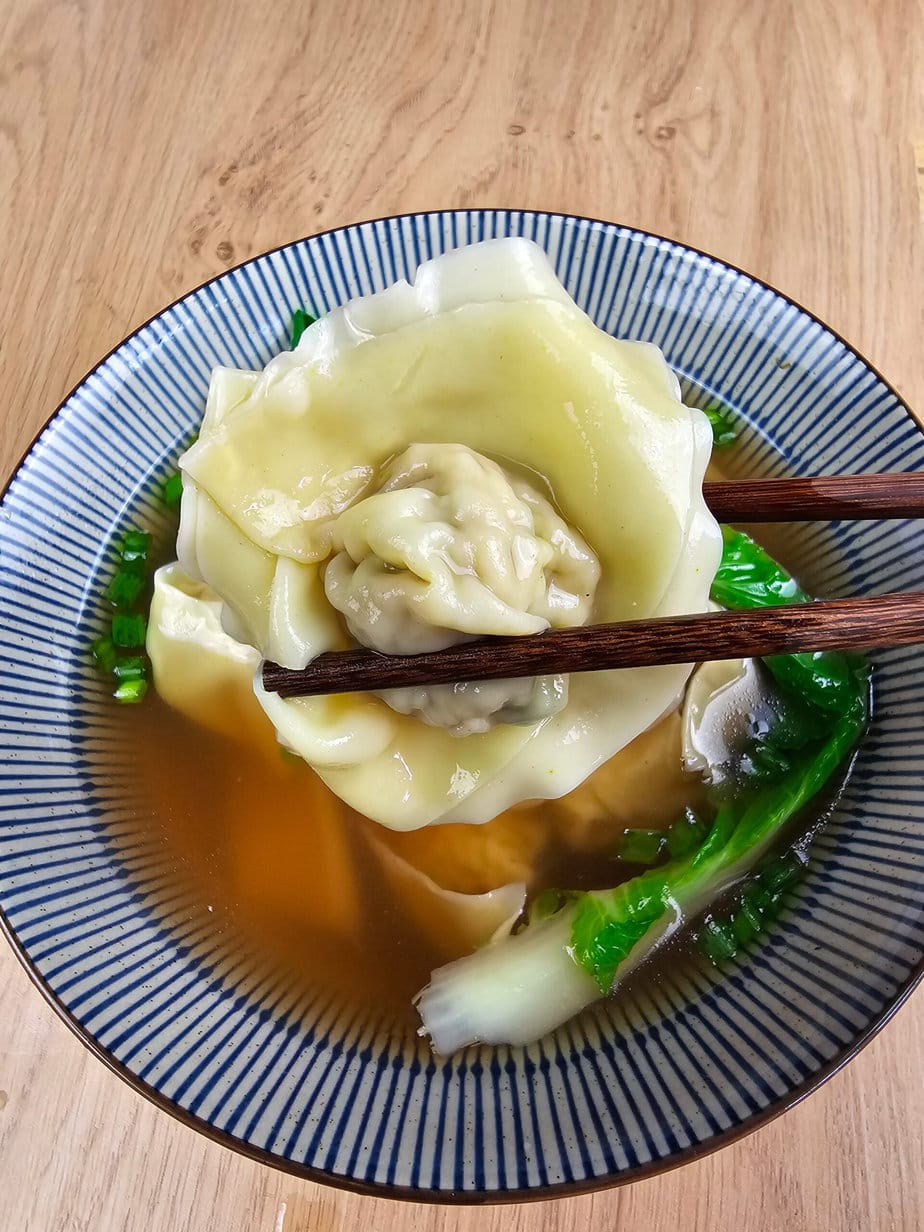
The stir-fried vegetable noodles perfectly illustrate the delicate and visually refined style of this cuisine, as do the delicious quick-braised mushrooms.
This vast region, which stretches from Shanghai to Nanjing through Suzhou and Wuxi, has many sub-cuisines (su cai), each proud of its own culinary traditions. The most prestigious of these is huai yang, renowned for its extreme finesse and sophisticated dishes that require great patience from chefs. In other cities like Shanghai or Nanjing, we often find the use of sweet and creamy sauces that give dishes their very particular character.
4. Zhejiang Cuisine
- Very mild, using fresh seafood, freshwater fish and bamboo shoots, and a wide variety of cooking methods.
The province of Zhejiang, located south of Jiangsu and also bordering Shanghai, presents a cuisine similar to that of its neighbors, although less sophisticated. It emphasizes the freshness of ingredients: dishes, often raw or barely cooked, are light, crispy, and seasonal, which may remind of some Japanese techniques. At the heart of this culinary approach is the city of Hangzhou, renowned for its gastronomic traditions.
Nicknamed zhe cai, Zhejiang cuisine relies on the use of vinegar, soy sauce, and Shaoxing wine (produced locally) to enhance flavors without overpowering them.
One of its most unique techniques is “drunken cuisine”: contrary to what the expression suggests, it doesn’t involve the chef cooking while under the influence of alcohol, but rather poaching meats and seafood in Chinese wine “until they become particularly tender. The” balance of flavors is essential: vinegar, ginger, and Shaoxing wine are precisely measured to preserve the delicacy of the ingredients.
5. Fujian/Min Cuisine
- Lighter, with a slightly sweet and sour taste, using ingredients mainly from the sea and mountains
Fujian cuisine, often referred to as min cai, is distinguished by its excellent seafood, rich soups, and measured use of spicy seasonings, without resorting to the numbing effects of Sichuan pepper. Through the abundance of exotic ingredients from both sea and mountain, its dishes surprise with flavors that are as original as they are intense.
Among the must-try dishes, the famous Buddha Jumps Over the Wall (佛跳墙) is a perfect example of Fujian extravagance. Legend has it that a monk, enticed by the intoxicating aroma of this soup, jumped over the wall of his monastery to taste a spoonful. This soup, prepared over several days, owes its reputation to the rarity and high cost of its ingredients, which include abalone, sea cucumber, and scallops.
6. Hunan Cuisine
- Quite spicy, with a hot and sour taste, favoring stir-fries, deep-frying, steaming, and smoking.
The province of Hunan, neighboring Sichuan, is known for offering even more intense flavors than its famous neighbor. While Sichuan abundantly uses numbing Sichuan pepper, Hunan prefers to rely on generous amounts of red or green chili peppers, whether fresh, pickled, or salted.
It’s a cuisine that doesn’t spare delicate palates: it’s often said that it delivers a gustatory sledgehammer blow
as its dishes can be so fiery. Even seemingly harmless dishes, like fried chicken or lotus root chips from the neighboring Hubei province, can turn out to be spicy traps for unsuspecting visitors! This abundance of chili peppers is partly explained by Hunan’s agricultural nature: the region enjoys a great diversity of vegetables and herbs, sometimes with Arab influences. Spicy meat lovers will probably succumb to cumin beef, a local classic that showcases robust flavors.
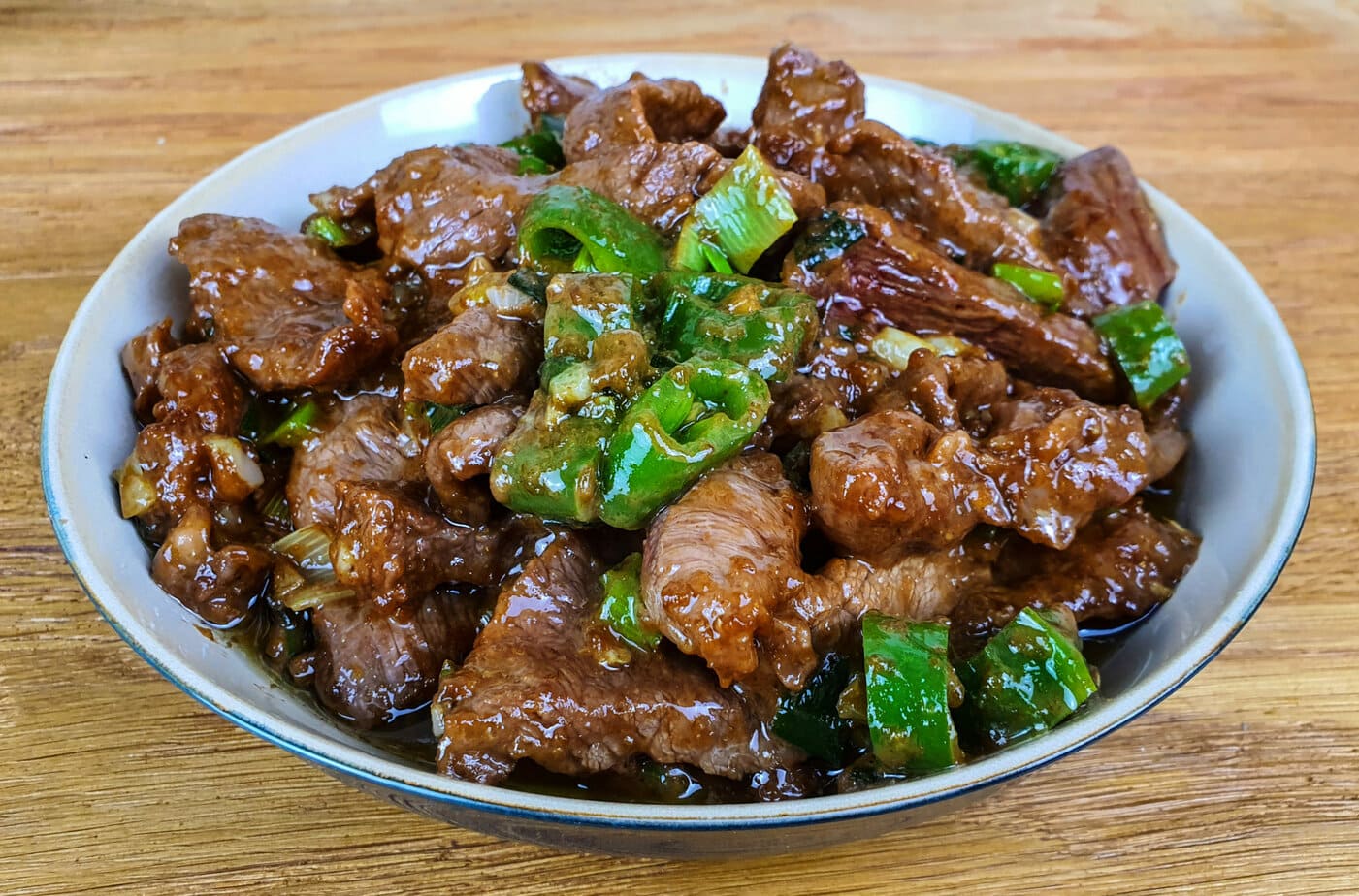
It’s also said that the famous Chinese-American dish crispy orange beef might have its roots in this province. Ultimately, if you already appreciate Sichuan specialties, you’ll likely fall for the even spicier charm of Hunan cuisine!
7. Anhui Cuisine
- Uses many wild plants and animals as ingredients, favoring stews and using a lot of oil
Anhui cuisine, sometimes considered more “wild” than that of Fujian, draws its character from the mountainous environment of this landlocked province. The Yellow Mountains, among others, are rich in wild foods and herbs that fuel a robust and generous peasant tradition. A legacy of a long-impoverished region, it mainly cooks pork, tofu, vegetables, and wild mushrooms, generally braised or steamed.
Despite the lack of coastline, river fish are not left out: notably, there’s the chòu guì yú, literally “stinky fish”, a dish famous throughout China for its very particular taste and smell. While this specialty may not be to everyone’s taste, it perfectly illustrates Anhui’s culinary audacity. Dishes often incorporate wild ingredients with unusual flavors, to the delight of gastronomic adventurers… at your own risk, of course!
In the region, you can also find the province of Hubei, whose capital is the infamous Wuhan. You can also find the delicious Chinese pearl dim sum there
8. Shandong Cuisine
- Salty and crispy, favoring braising and seafood
Shandong cuisine is considered one of the most important in China, although it is still little known abroad. Originating from the eponymous coastal province, birthplace of Confucius and Qingdao beer, it has exerted a strong influence on many regions of the North (Hebei, Shanxi, Tianjin, Liaoning, and Beijing). Its techniques have also been adopted in the imperial cuisines of the Forbidden City in Beijing.
Shandong, one of the first civilized regions of the country, laid the foundations for Northern culinary styles. Thanks to its long coastline, seafood plays an important role, and care is taken to preserve its original flavor by using simple ingredients and favoring braising. The inhabitants are particularly fond of vinegar and salt. Unlike Southern cuisines, wheat-based products, especially noodles, are consumed much more. Finally, many dishes rely on very thick sauces, braises, and complex preparations with multiple steps to achieve specific flavors and textures.
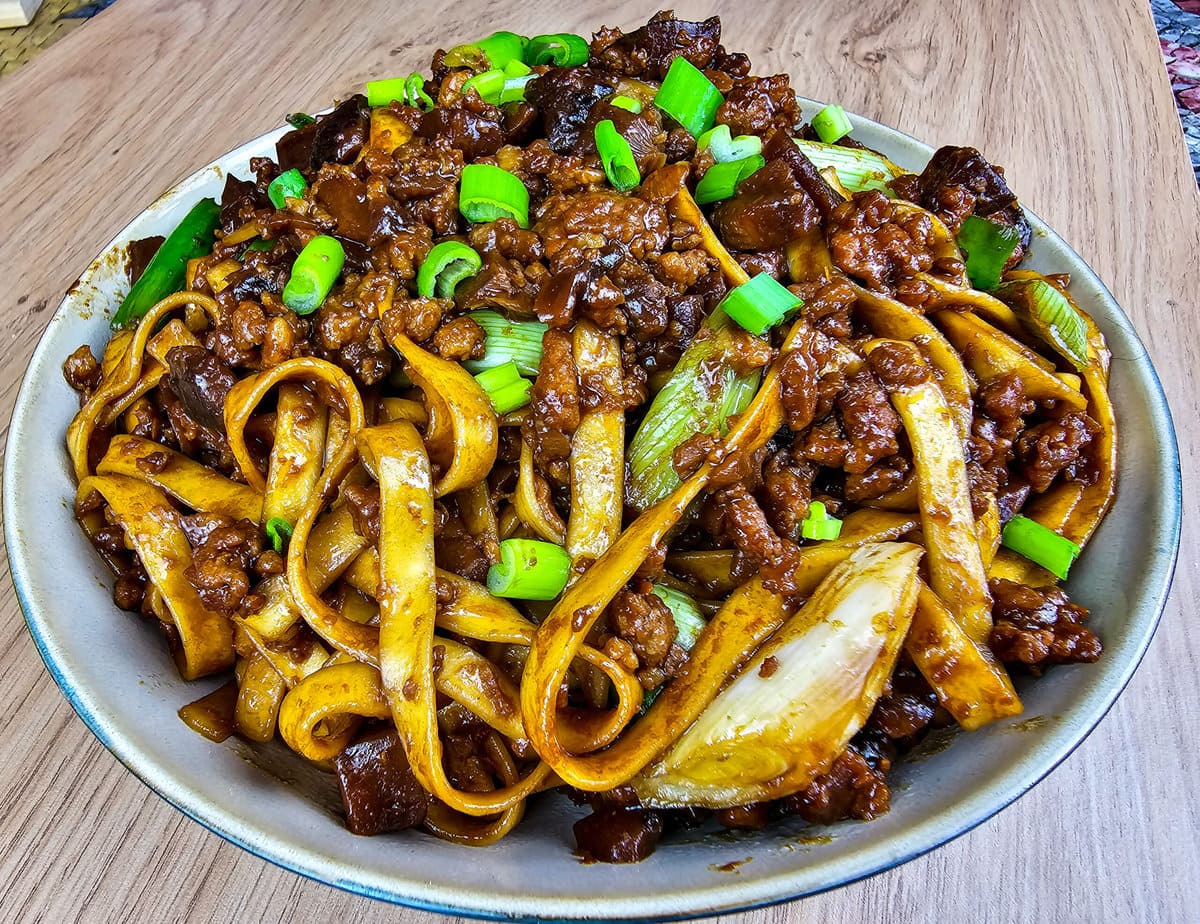
The most commonly used ingredients in Chinese cuisine
There are an enormous number of ingredients used in Chinese cuisine. Given the quantity, it can be difficult to navigate, so I will gradually try to enrich this list so that no ingredient will have any secrets from you! Simply click on each name to be redirected to my complete article on the subject.
- Dark and light soy sauce
- Rice: numerous varieties of rice exist and are consumed and cultivated in China
- Oyster sauce
- Rice vinegar
- Chinese cabbage
- What is Shaoxing wine ?
- Hoisin sauce
- Sweet and sour sauce
- Scallion oil
- Sesame oil
- Monosodium glutamate
- Black rice vinegar
- Water chestnut
- Kai lan
- Choy sum
- Douchi or fermented black beans with the corresponding black bean sauce
- Jujube: the Chinese red date
- Black cardamom
- Taro: used in soups and desserts
- Water spinach
- Chinese five-spice powder
- Chinese cinnamon
Chinese New Year
Each year brings the famous Chinese New Year period. In my comprehensive article on the subject, I tell you all about the traditions and recipes to make for Chinese New Year
Chinese desserts
Chinese cuisine offers a wide variety of desserts that highlight the flavors, textures, and culinary techniques of different regions of the country. From glutinous rice balls filled with red bean paste, often served during Chinese New Year, to delicate sweet dim sum like Hong Kong egg tarts, the diversity is impressive.
Among these sweet treasures, mooncakes hold a special place. Traditionally consumed during the Mid-Autumn Festival, they embody the importance of family and reunion. Other popular desserts include “Douhua” (silken tofu), “Tangyuan”, and various kinds of puddings and jellies. Each of these desserts not only has a unique flavor but also a cultural and historical significance that adds an extra layer of richness to the culinary experience.
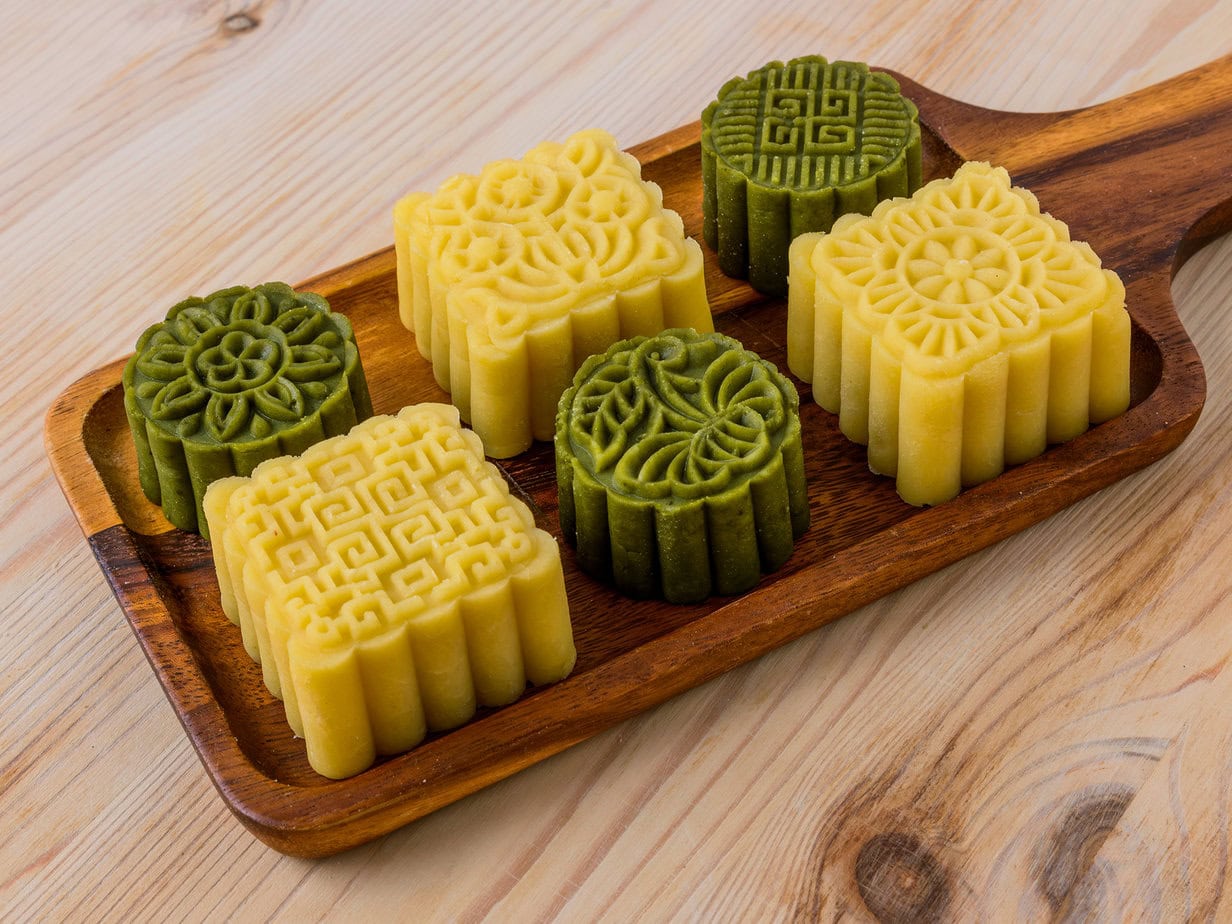
Hong Kong cuisine
A little bonus because many delicious recipes come from there. For example, the famous dessert nuomici or coconut pearl. The origin of glutinous rice with red beans is not clear, but some sources say it originated there
Hong Kong style includes a lot of fusion with Western cuisine. Unlike mainland Chinese cuisine, you may sometimes find butter and other dairy products, as well as many desserts. And most importantly, delicious sweet sauces like the one in my crispy honey chicken or almond chicken, and for something more savory, you can check out my garlic chicken recipe
Taiwanese Cuisine
Inventors of the famous bubble tea, like Hong Kong, they don’t hesitate to use Western techniques for our greatest pleasure. The Coca-Cola chicken also comes from there.
I can’t talk about Taiwan without mentioning the Taiwanese popcorn chicken, a pure delight
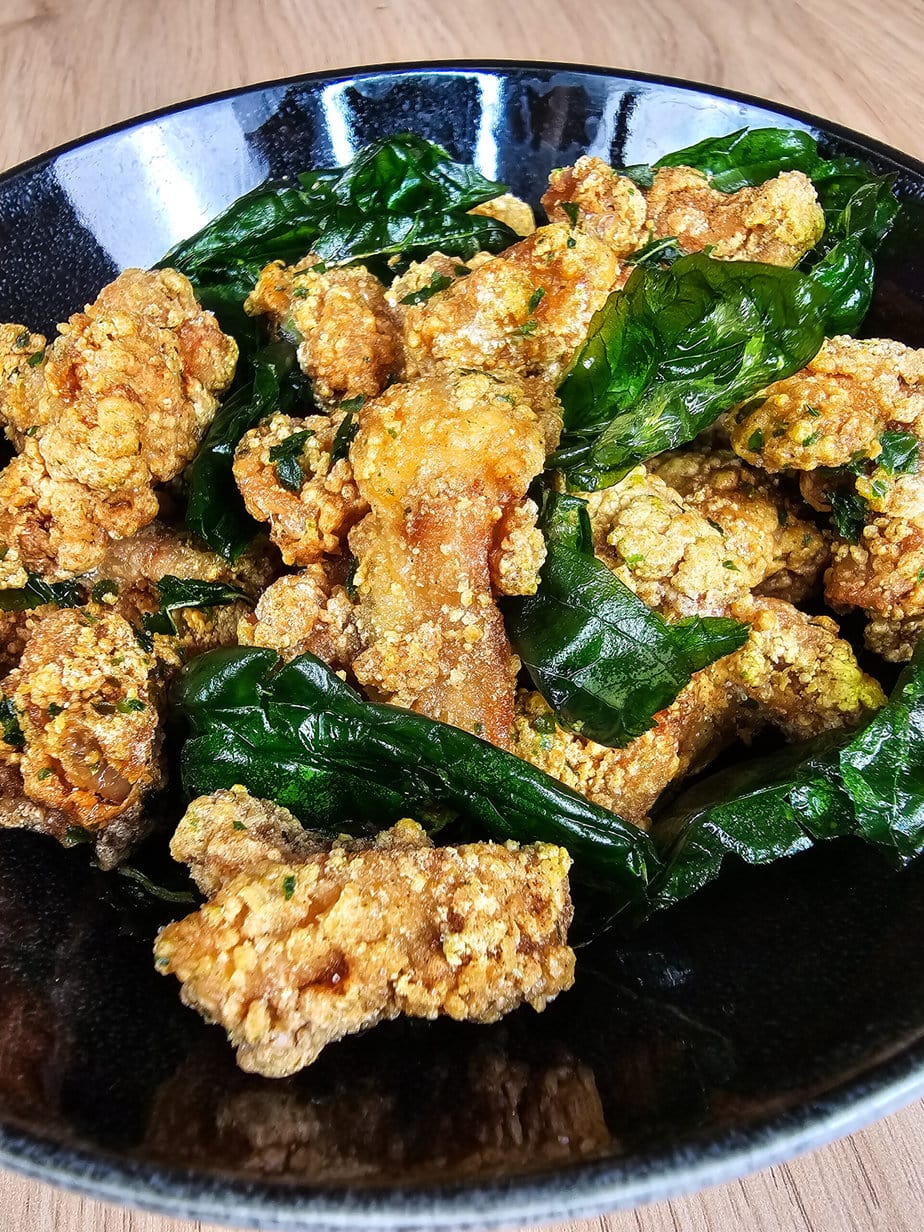
In Taiwan, you can also find the delicious Taiwanese braised pork Lu Rou Fan

